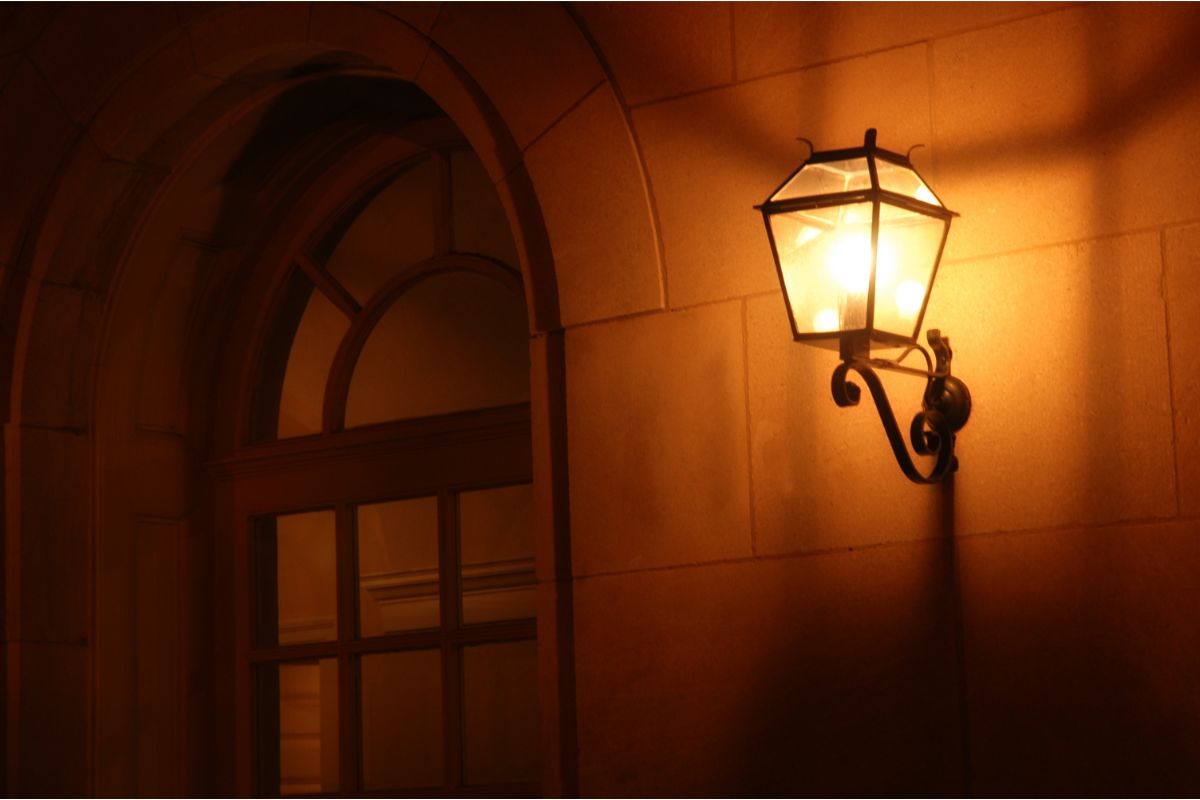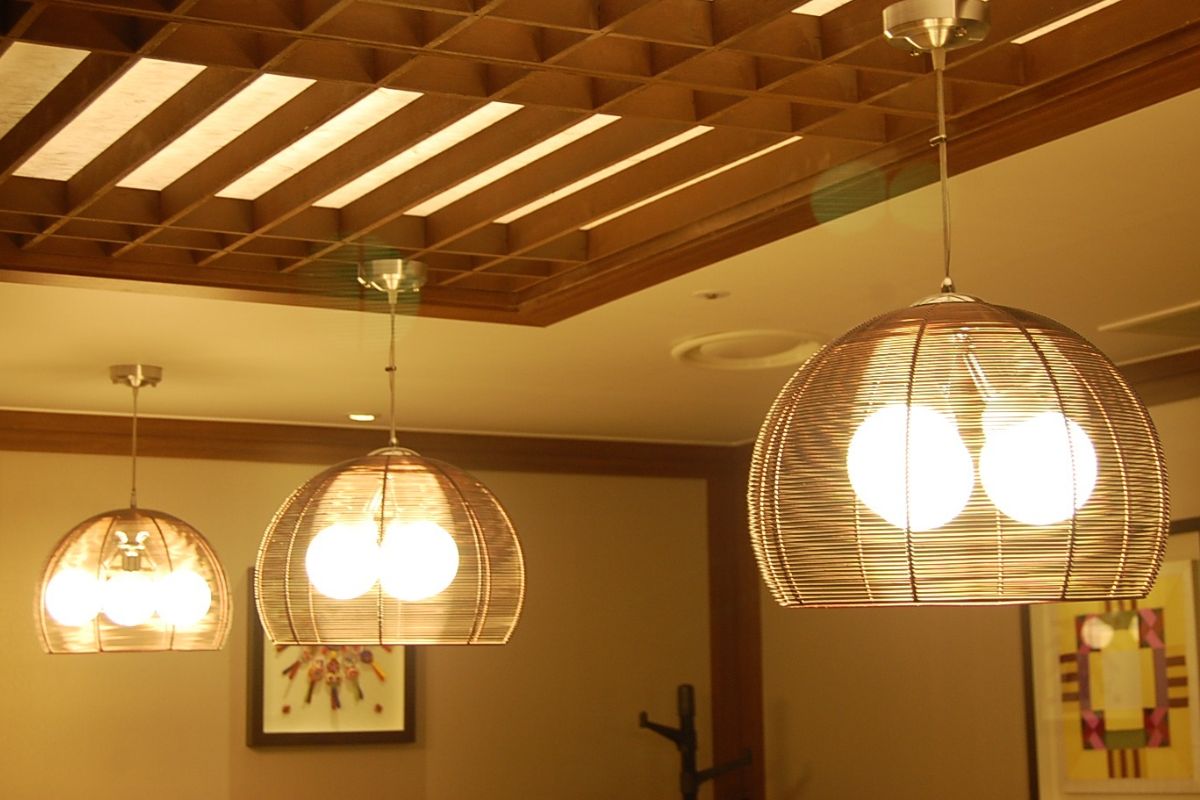Under cabinet lighting is ideal for illuminating the shadowy areas in operational zones, or, in plain English, it helps us to not chop our fingers off when we’re preparing tasty food in our kitchens.

It can create a sharp, neat look, giving our culinary caves a modern facelift, but there’s one aspect of these nifty fixtures that isn’t always so tidy… the cables!
It’s not always obvious where these messy wires are supposed to go, meaning they’re often left in sub-optimal, visible locations, resulting in a cluttered, unfinished, and stressful environment —
Not what you want with lots of sharp things and fire around, huh?
Not to worry, though. I’m going to be giving you all the tips and tricks for hiding the wires of under cabinet lighting. At least one of these methods should be perfect for your situation, so read through and see what you think.
Cable Protectors: The Anyone Can Do It Solution
Let’s begin with the easiest solution of all, a solution that pretty much anyone could implement regardless of their DIY skills.
For a simple fix, pick up some cable hiders, cut them down to size, and use them to hide your under cabinet wiring from view. If you’d prefer a higher end look (and you’re a DIY don!), you could craft your own cable hiders out of wood that matches the cabinetry in your kitchen.
Alternatively, you could just paint the plastic cable hiders to suit the aesthetic of the room.
Whichever route you take, you’ll need some cable ties to wrangle the wiring together into a manageable bundle that you can then shield with the cable hiders of your choosing.
As for fitting the cable hiders, most arrive with powerful adhesive backs so you can install them without any tools or equipment, but others may need to be glued or otherwise held in place.
Inside The Cabinetry: The Completely Out Of Sight Solution
The most common solution for this tangle of visible wires is to run them through the cabinetry itself. They should run from the outlet or hardwiring, through the back of the cabinet, and then towards each individual fixture.
It’s important to stay on top of cable management within your cabinetry, as the last thing you want is loose wires in your food storage space.
The wires must be routed along the edges of the cabinets with cable clips, thus keeping the bulk of the space free and ensuring you’re not going to snag the cables when putting things in or taking things out of your cabinet.
If you have multiple under cabinet lights, you’ll likely also have to route the cables through the sides of your cabinets in order to reach them.
Through The Back Wall: The Advanced Solution
The pro solution is to feed all your under cabinet light wiring through the wall behind the cabinets. They can then be routed to the spot just behind the fixture, poked through the wall, and into the power port of the light.
To clean up what little wiring will still be exposed, simply use some cable clips to secure it to the bottom of the cabinetry.
The great thing about this method is that you don’t have to be so strict with cable management, as most of the wires are hidden inside the back wall. They can look like a total mess in there and it wouldn’t matter because no one’s ever going to see them.
His method also saves you cutting into your cabinetry, which is a pretty big bonus, but you have to be comfortable punching through your wall instead, and to do so, you have to be able to access your drywall, which isn’t always possible if the cabinets are already fitted.
Wood Valances: The Decorative Solution
Another option is to simply use cable clips to pin the wires to the bottom of your cabinetry, then fit valances beneath your cabinets to hide them. And if you’re wondering, valances are any materials used to shield the structural elements of something else.

They’re basically just little skirting boards for your cupboards, providing a lip behind which you can keep things like wires out of sight.
Of course, if you plan on crafting the valances yourself, it can be a pretty tricky solution, but if you like the idea of adding a decorative element to your cabinetry while solving your exposed wire woes, it’s definitely the way to go.
Alternatively, you can purchase prefabricated valances then cut them down to size and fit them yourself. It’ll cost you a bit more, but it’ll save you hours of labor.
Fabric Valances: The Odd Solution
Admittedly, this one’s a little strange, but it’s super easy, so I thought I’d mention it anyway — Instead of wood valances, you could use fabric valances.
It makes for a pretty traditional look, so I wouldn’t use this method if you have a particularly modern kitchen, but if you’re down with decking your kitchen out with drapes, it might be the solution you’ve been searching for.
Choose Battery Powered LED Strips: The Problem Dodger
Why solve a problem when you can eliminate the problem altogether? With battery-powered LED strip or puck lights, you won’t have to deal with wires at all. At the most, you’ll have to mount a battery bay, but that’s literally it.
There are even motion sensor options so you don’t have to worry about manual control. All you have to do is keep some batteries to hand for when those powering the lights run dry, but, generally speaking, you should get about 100 hours from each battery.
Final Thoughts
That pesky wiring can put you off even attempting to install under cabinet lighting, but this hesitation is actually very helpful, as it’s always best to plan out your wire shielding methods before you fit the fixtures.
I’ve provided you with a wealth of different options here today, each requiring a different skill level and materials, so with any luck, no matter how dire your under cabinet light wiring situation is, you know exactly how to fix the problem. Best of luck!



